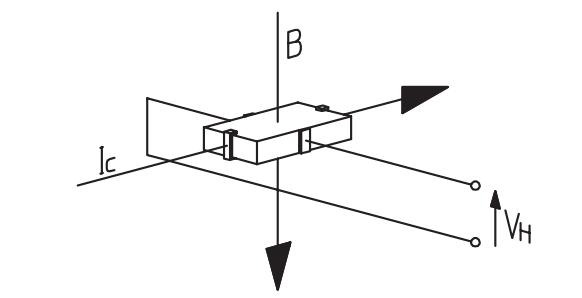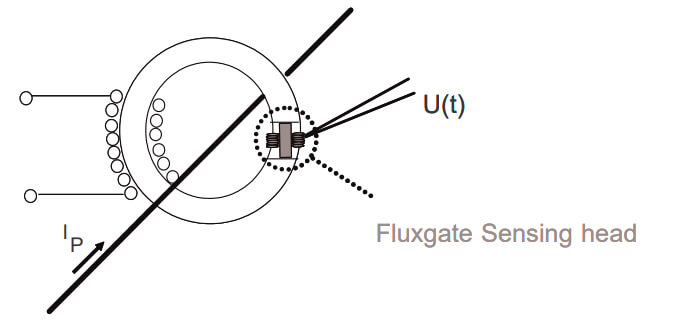为了满足市场的各种电气和机械要求,LEM 开发了一系列技术,其中包括
- 霍尔效应开环技术
- 霍尔效应闭环技术
- 磁通门技术,包括 "IT 型"、"C 型"、"CTSR 型"、"CAS-CASR-CKSR 型 "和 "ITC 型"。
- 绝缘数字技术,包括 "DVL & DVM & DV 型"。
- 无磁芯技术,包括罗戈夫斯基线圈、PRiME™ 和电流互感器类型
对大多数应用来说,都可以在上述提到的技术系列传感器中找到满足其需求的最佳解决方案,而且 LEM 完全有能力开发定制解决方案,以满足客户的特殊要求。
霍尔效应电流传感器

LEM 霍尔效应电流传感器有开环、闭环和 Eta 三种配置。
开环传感器性价比高,体积小,功耗低。闭环传感器精度更高、响应速度更快,可测量频率范围更广。
霍尔效应 Eta 传感器的结构与闭环传感器类似,有类似形状的的磁芯、霍尔元件和副边绕组。霍尔效应 Eta 传感器是开环技术和电流互感器技术的结合体,在低频时,开环传感器工作(根据具体的传感器设计,频率可达 2...10 kHz),在高频时,电流互感器工作。霍尔效应信号和变压器信号通过电子方式相加,形成一个共同的输出信号。
磁通门电流传感器

标准闭环磁通门传感器使用副边绕组来抵消原边导体在磁路中产生的磁场。虽然在操作上与闭环霍尔效应传感器相似,但磁通门传感器在磁芯气隙中放置的是一个小型的薄磁芯可饱和电感器来感应磁场,而不是霍尔元件。
其他磁通门传感器以该技术为基础,拓展各自的优势。它们包括:
- 低频型,磁场感应元件缠绕在环形磁芯上,而不是使用气隙,在制造上更具成本成本优势的传感器
- C 型,其结构与低频磁通门传感器类似,但采用独立磁芯以提高高频性能
- IT 型,使用两个环形磁芯和相对的激励线圈。
无磁芯电流传感器
由于剩磁、滞后、非线性、损耗和饱和等特性,用于制造磁芯的材料会限制传感器的性能。因此,通常会考虑设计空气导磁或无磁芯传感器。
比如,罗戈夫斯基线圈传感器就是利用空气作为导磁材料。
罗戈夫斯基线圈和 PRiME™ 技术都基于相同的基本原理;拾取线圈与待测电流产生的磁通量进行磁耦合。拾取线圈上感应出的电压与磁通量的导数成正比,因此也与被测电流的导数成正比。由于直流导数为零,因此这项技术仅适用于交流或脉冲电流测量。
绝缘数字技术
绝缘数字技术的工作原理
测量电压 VP通过一个电阻网络直接施加到电压传感器的原边输入端,信号调节电路馈送到 Sigma-Delta 调制器,通过单独的隔离通道传输数据。
然后,信号通过绝缘变压器传输到副边,以确保高压侧(一次)和低压侧(二次)之间的绝缘。
信号在二次侧被重塑整形,通过数字滤波器解码和过滤,利用数字/模拟(D/A)转换器和电压-电流转换器输出电流信号。
还原后的输出信号与一次侧完全绝缘,并准确地反应一次侧电压。
主要功能
- 测量各种类型的信号: 直流、交流、脉冲和复杂信号
- 低容量技术:体积小巧
- 一次侧电路(高压)和二次侧电路(电子电路)之间的电隔离度高
- 低损耗技术
- 极高的精度
- 低温漂